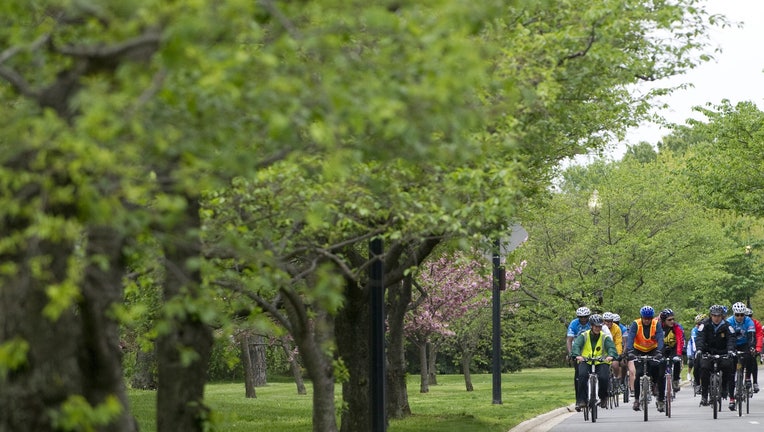Map: These are the country's top cities for parks

US Military veterans, hospital staff and members of the US Park Service ride bicycle at Hains Point in Washington, DC, April 22, 2011. DC has the best-rated ParkScore in America, according to the Trust for Public Land (Photo credit should read SAUL L
Americans are feeling lonelier and more politically polarized than ever, but U.S. cities with the most parks have more socially connected residents and higher trust in their local government, a new report found.
The report, produced by the Trust for Public Land, ranked America’s 100 most populous cities according to their ParkScore, a grade based on park access, equity, acreage, investment and amenities.
"Parks remain a neutral public gathering place where community members can meet, collaborate, and become empowered," the report says.
RELATED: Here are the best places to live in the US in 2024, report says
Top U.S. Cities for parks
The report found that 81% of major metros in the US were more racially segregated in 2019 than they were in 1990, but cities with the highest ParkScores had, on average, 26 percent more social connections between low- and high-income residents.
One in two people in America have experienced increasing loneliness since the Covid-19 pandemic in 2020, but residents in cities with high ParkScores – and park leaders who create green spaces and encourage social connection – feel less alone.
People who live in cities with the highest ParkScores were also 60% more likely to volunteer than those in lower-ranked cities.
Here are the top 12 cities with the highest ParkScores, according to the Trust for Public Land:
- Washington, DC (697 parks)
- Minneapolis, Minnesota (301 parks)
- St. Paul, Minnesota (270 parks)
- Irvine, California (356 parks)
- Arlington, Virginia (186 parks)
- Seattle, Washington (874 parks)
- San Francisco, California (495 parks)
- Cincinnati, Ohio (377 parks)
- Portland, Oregon (330 parks)
- Chicago, Illinois (1,247 parks)
- St. Petersburg, Florida (193 parks)
- New York, New York (2,363 parks)
According to the Center for Active Design, people who live near parks are more likely to be satisfied with their local government.
"Parks hold tremendous potential for repairing our frayed social fabric, making it incumbent upon the entire parks and recreation field, as well as nonprofit and philanthropic organizations, government agencies, the private sector, and private citizens, to lean into funding and programming opportunities," the report concludes.

